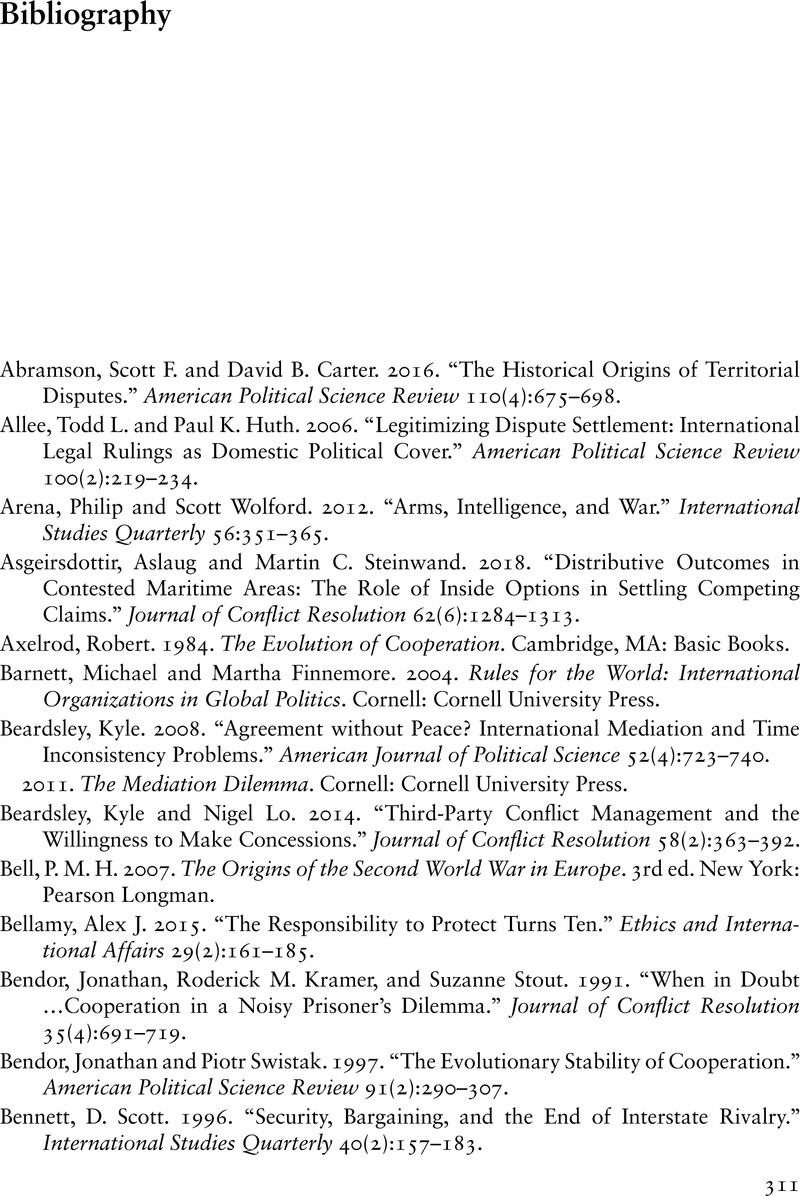Bibliography
Published online by Cambridge University Press: 26 February 2021
Summary

- Type
- Chapter
- Information
- On Dangerous GroundA Theory of Bargaining, Border Settlement, and Rivalry, pp. 311 - 324Publisher: Cambridge University PressPrint publication year: 2021

